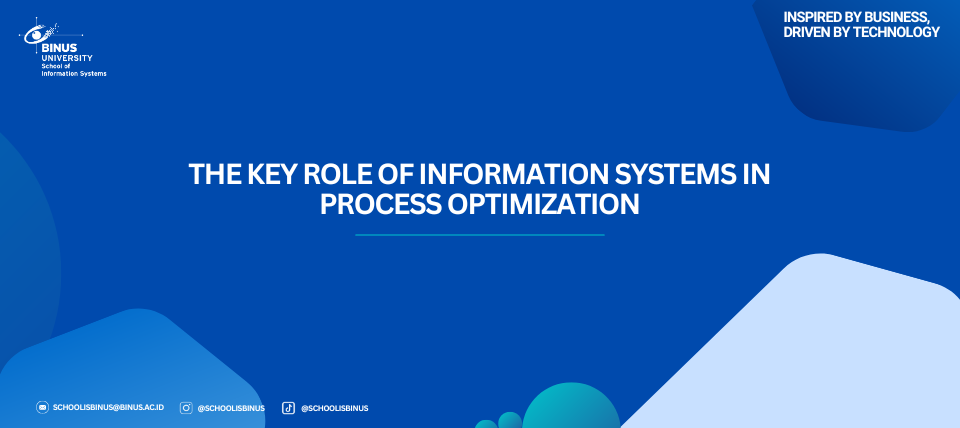The Key Role of Information Systems in Process Optimization

Introduction: The Operational Core of an Enterprise
In any organization, success is measured by how efficiently and effectively it converts input into valuable output for the customer. The structured series of steps in the Business Processes (BPs), from receiving an order to delivering a product. A company risks operational chaos, resource waste, and poor customer service without well-defined processes. This is where the central role of Information Systems (IS) emerges. IS is no longer just a support function; the primary architect designs and optimizes work across the organization.
Three Pillars of Process Optimization via Information Systems
The deployment of Information Systems in Business Process Management (BPM) aims to achieve three core objectives: efficiency, integration, and visibility.
- Boosting Efficiency through Automation
One of the most significant contributions of IS is its ability to automate repetitive and time-consuming tasks. When systems like Enterprise Resource Planning (ERP) handle data entry, inventory verification, or invoice generation, the risk of human error is drastically reduced. Employees previously bogged down by administrative work can now focus their energy on analysis, innovation, and more strategic customer interactions.
- Breaking Down Silos with Data Integration
Many business problems stem from disconnected communication between departments, commonly known as data silos. Information Systems act as a central nervous system that integrates data from various functions—sales, manufacturing, finance, and logistics. This seamless flow of information ensures that every decision is based on uniform, real-time data. This process integration speeds up the overall business cycle and improves cross-functional coordination.
- Measuring and Analyzing Performance
You can’t manage what you can’t measure. Information Systems provide robust monitoring tools, displaying dashboards and key performance indicators (KPIs). With this structured data, managers can quickly identify bottlenecks or the process steps that incur the highest cost or time. The ability to perform in-depth process data analysis enables companies to make evidence-based decisions about where and how processes must be improved.
Process Innovation: Designing the Future
A vital task for Information Systems professionals is to lead Business Process Reengineering (BPR). This means not just fixing existing processes, but having the courage to radically rethink how those processes should operate in the future.
By leveraging new technologies—from artificial intelligence to predictive analytics—IS students and graduates are the change agents who can draft the blueprints for processes that are more agile, responsive, and innovative. The ultimate goal is to create processes that are not only efficient but also deliver a superior and sustainable value proposition to the market.
Conclusion
Optimized business processes are the foundation for long-term competitive advantage. The Information Systems discipline cultivates individuals who not only understand technology but also understand how technology must be strategically applied to achieve core business objectives. Mastering the architecture of business processes supported by IS is the critical skill that determines a company’s position in an increasingly dynamic marketplace.
References
Bitkowska, A., Dziembek, D., & Gzik, T. (2024). Business Process Management based on the project and knowledge perspective. Journal of Management and Financial Sciences, (50). https://doi.org/10.33119/JMFS.2023.50.2
Gupron, G., Yandi, A., Suprapto, E., & Sadewa, I. (2024). Management Information System (MIS) for Achieving Work Efficiency and Effectiveness in Maximizing Employee Performance: A Conceptual Study as a Guide for Researchers. Siber International Journal of Digital Business (SIJDB), 2(2), 149–162. https://doi.org/10.38035/sijdb.v2i2.135
Monferdini, L., & Bottani, E. (2024). How do businesses utilize change management for process optimization? A cross-analysis among industrial sectors. Business Process Management Journal, 30(8), 371–414. https://doi.org/10.1108/BPMJ-03-2024-0158
Trkman, P., & Potočan, V. (2013). The impact of process management system implementation on organizational performance: A review. International Journal of Information Management, 33(2), 242–252. https://doi.org/10.1016/j.ijinfomgt.2012.11.002

